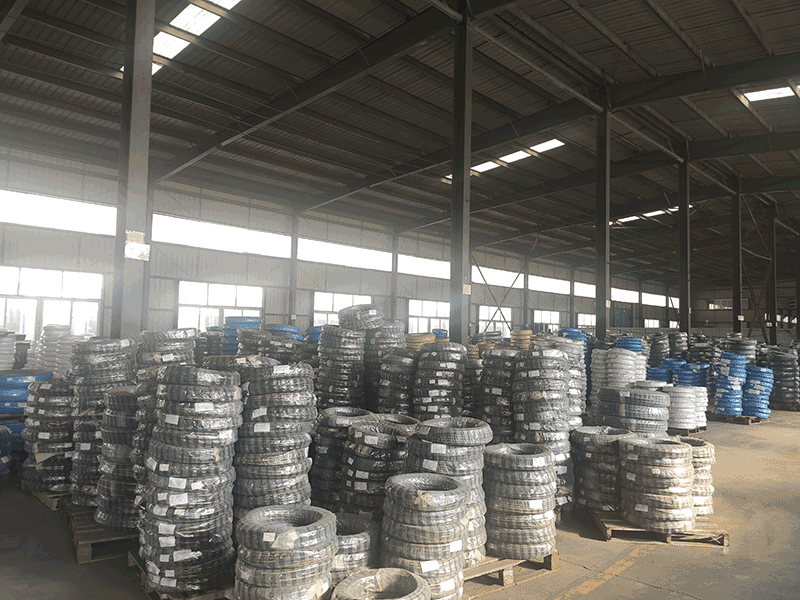Packaging
First, the hydraulic hoses produced by the Sinopulse factory are subjected to working pressure tests, burst tests, and pulse tests.
Then, They're packaged, labeled, and placed in warehouses to await shipment.
Usually, we use weaving belts or PE plastic film to pack hydraulic hoses, which is environmentally friendly and cost-effective. Of course, you can also ask for other packagings, such as wooden boxes.
It is important to ensure that hydraulic hoses are packed carefully to avoid any damage during transport. The appropriate method for storage will depend on the size and length of the hoses in question. They can either be coiled and secured with ties or placed directly in a sturdy box. It is advisable to use protective padding or bubble wrap to prevent damage to the hose fittings. For larger hoses or orders, wooden boxes or pallets can be utilised. It is important to note that hydraulic hoses should not be bent beyond their minimum bending radius, as this may result in damage to the product.
Sinopulse hydraulic hoses are packaged with the utmost care to guarantee safe delivery. We meticulously roll them to maintain their shape and functionality and secure them with strong, durable materials. Protective packaging ensures that each hose remains undamaged during transport, guaranteeing high performance and longevity. Invest in quality and order your hydraulic hoses today.
Hydraulic hose packing with trays ensures safety. We use uniquely designed trays to keep hoses safe from damage and kinks. These trays are made of strong, durable wood for optimal stacking, efficient transport and easy access. It's time to choose the right hose packaging pallets for your hydraulic hose transport.
Shipping
The shipping of hydraulic hoses involves the process of safe packaging, transport and delivery from the manufacturer or distributor to the final consumer or business. These hoses are used in a variety of industries such as construction, manufacturing, automotive and other heavy machinery industries, so their transport is critical. They come in a variety of sizes, lengths, and specifications, and properly handling these differences is key to effective shipping.
Packaging: Hydraulic hoses must be packed carefully to avoid any damage during transport. Depending on their size and length, they can either be coiled and secured with ties or placed directly in a sturdy box
Labelling: correct labelling is essential for efficient and accurate delivery. Labelling should include information such as the sender's and recipient's address, product details (e.g. material, size, length), handling instructions and any other necessary information. If the hose is considered a hazardous material because it is filled with hydraulic fluid, it must be labelled according to the regulations.
Transport: Depending on the distance and urgency, hydraulic hoses can be transported by road (truck), sea or air. Road transport is usually used for local or domestic deliveries, while sea and air transport are used for international shipments. The choice of transport will affect the cost and time of delivery. For example, air freight is faster but more expensive than sea freight.
Customs and Duties: For international shipments, duties and import taxes may be levied based on the value of the hydraulic hose. In addition, specific documentation is required for customs clearance. This will include a commercial invoice, packing list, bill of lading or air waybill, and possibly a certificate of origin. Failure to comply with these may result in delays or penalties.
Delivery: The final step in the shipping process is delivery to the customer. This may require a signature or other proof of delivery. It is also important to provide tracking information to the customer so they can monitor the progress of the shipment.
Insurance: Given the critical role that hydraulic hoses play in many operations, it is often recommended that these shipments be insured. This insurance protects against financial loss if the hose is damaged or lost in transit.
Throughout all these stages, a focus on efficiency, cost-effectiveness and product safety is key. Sinopulse has more than two decades of experience in exporting hydraulic hoses, and we can expertly handle the packing and shipping of hydraulic hoses and ensure that they arrive at their destination on time and in good condition.



















